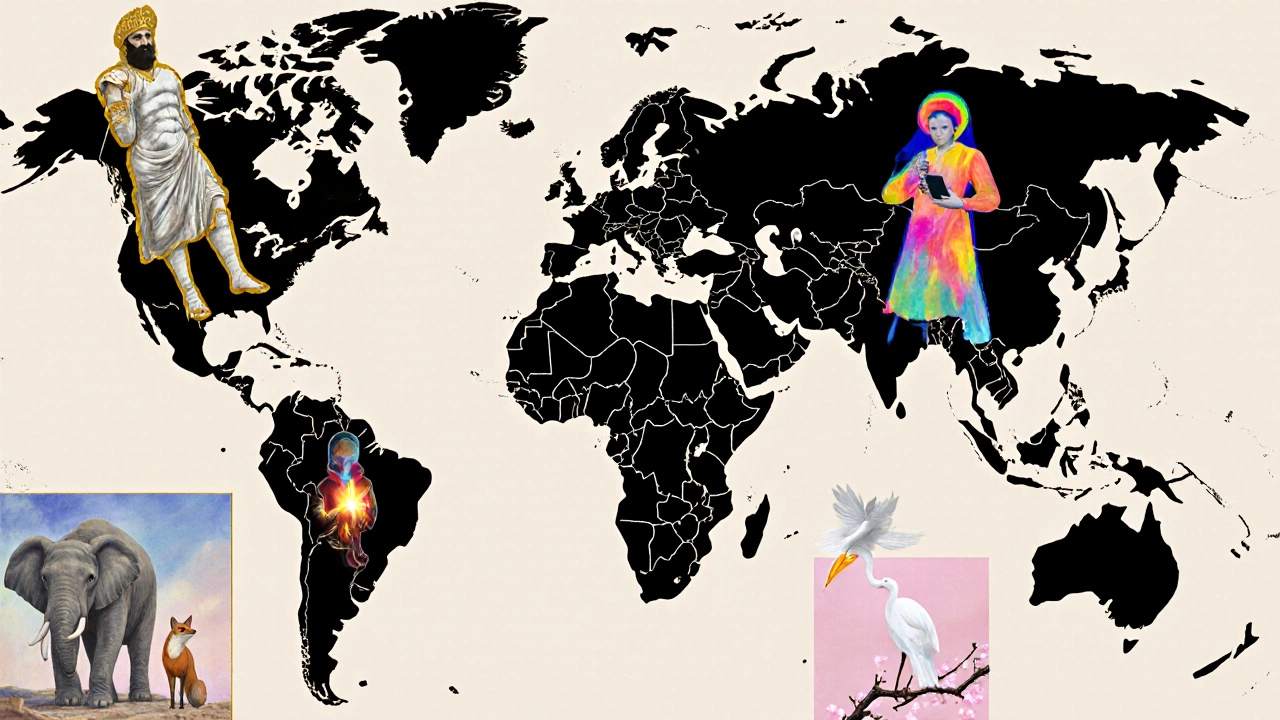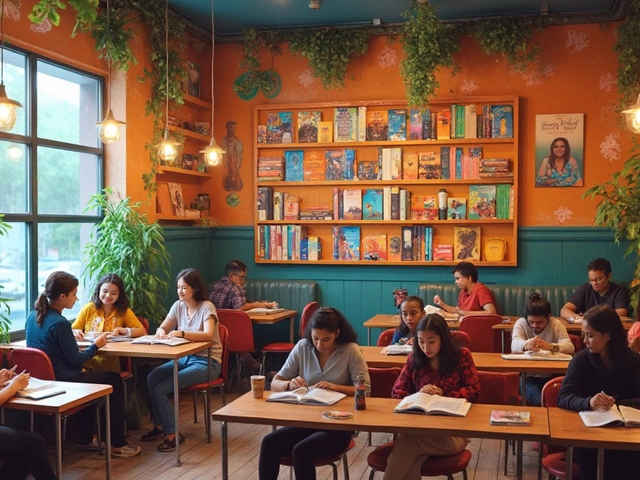
Cultural Narrative Quality Checker
Assess Your Cultural Narrative
Use this tool to evaluate the quality of your community's or organization's cultural narrative against 5 key criteria. Answer each question honestly to get a detailed assessment.
When you hear a story that seems to belong to everyone in a community, you’re probably dealing with a Cultural narrative is a shared story that a community tells about its past, values, and identity, shaping how members interpret the world. These narratives act like invisible glue, holding people together while also guiding how they see themselves and outsiders.
Defining a Cultural Narrative
A cultural narrative isn’t just any story. It’s a collective account that repeats across generations, often reinforced through rituals, media, education, and everyday conversation. Unlike a personal anecdote, it carries weight because it reflects a group’s worldview, moral compass, and aspirations.
Key traits include:
- Shared ownership: Most members recognize the story as “ours.”
- Historical framing: It links present identity to an interpreted past.
- Value alignment: The narrative promotes certain virtues-courage, humility, resilience.
- Repetitive transmission: It resurfaces in festivals, textbooks, movies, and even memes.
Why Cultural Narratives Matter
Understanding these stories helps you see why people act the way they do. A nation’s drive for innovation, a tribe’s reverence for nature, or a city’s love for its waterfront-all stem from underlying narratives.
Research from the University of Cambridge (2023) showed that regions with a strong “progress narrative” reported 15% higher civic participation than those lacking a clear story. In other words, the story you tell yourself can boost real‑world action.
Classic Examples from Around the World
Below are some time‑tested cultural narratives that still shape societies today.
| Type | Origin | Core Message | Key Impact |
|---|---|---|---|
| Myth | Ancient Greece | Heroes embody divine virtues | Sets moral standards, explains natural phenomena |
| Folktale | Rural India | Community wisdom through animal characters | Teaches social norms, preserves language |
| Urban legend | Modern United States | Fear of the unknown in technology | Shapes attitudes toward privacy and security |
| National founding story | United States | Freedom and self‑determination | fuels patriotism, drives political rhetoric |
| Collective trauma narrative | Post‑war Japan | Peace through humility | Influences foreign policy, education |

Modern Media and Everyday Life
Today, films, TV shows, and social platforms act as fast‑track transmitters of cultural narratives. Think of the “American Dream” portrayed in Hollywood blockbusters-hard work leads to success. Or the “K‑pop rise” narrative, which frames South Korea as a cultural powerhouse despite its small size.
Even memes become mini‑narratives. The "Stay Home, Save Lives" campaign during the COVID‑19 pandemic turned a public‑health directive into a shared story about collective responsibility.
How to Spot a Cultural Narrative in Your Community
- Listen for recurring themes in local festivals, songs, and ceremonies.
- Check school curricula-what historical events are highlighted?
- Observe media coverage-what angles are repeated?
- Talk to elders-what stories do they say define the community?
- Notice language-words like “our heritage,” “the way we do things,” or “tradition” often flag a narrative.
When these elements align, you’ve likely uncovered a cultural narrative.
Building Your Own Narrative - Tips for Communities and Brands
Whether you’re a grassroots group or a brand, you can craft a narrative that resonates.
- Start with authenticity: Pull from genuine history, not invented myths.
- Identify core values: What does your group stand for? Use those as pillars.
- Choose a relatable protagonist: It could be a founding figure, a collective “we,” or even an everyday citizen.
- Use multiple channels: Combine oral storytelling, visual art, and digital content.
- Invite participation: Allow community members to add verses, symbols, or modern twists.
Successful examples include the “Zero Waste” movement, which turned waste reduction into a moral story about caring for the planet, and the “Made in Canada” brand narrative, which ties quality craftsmanship to national pride.
Common Pitfalls to Avoid
Even well‑meaning narratives can backfire. Beware of:
- Excluding minorities: A narrative that ignores certain groups fuels division.
- Over‑simplification: Reducing complex histories to slogans erodes credibility.
- Static storytelling: Cultures evolve; your narrative must adapt or become obsolete.
Quick Checklist for Evaluating a Cultural Narrative
- Does it reflect shared experiences?
- Is it reinforced through rituals or media?
- Does it promote values the community truly holds?
- Can it evolve without losing core meaning?
- Is it inclusive of diverse voices?
What distinguishes a cultural narrative from a myth?
A myth explains cosmic origins or divine actions, often set in a sacred realm. A cultural narrative, while it can include mythic elements, focuses on shared values, identity, and social norms within a particular community.
Can a single country have multiple cultural narratives?
Absolutely. Nations are mosaics of regions, ethnic groups, and classes, each carrying its own story. For example, the United States holds the “American Dream,” the “Frontier spirit,” and the “Melting pot” narratives simultaneously.
How do cultural narratives influence political decisions?
Policymakers often invoke dominant narratives to justify actions. A “security” narrative can lead to stricter laws, while a “freedom” narrative may push for deregulation. Voters, in turn, filter proposals through the lens of the stories they believe.
Are urban legends considered cultural narratives?
Yes. Urban legends spread quickly through modern channels, reflecting anxieties about technology, safety, or social change. They become part of a community’s shared warning system.
What role does collective memory play in shaping narratives?
Collective memory preserves selective elements of the past. When a community repeatedly recalls certain events, those memories crystallize into narratives that guide present behavior.


